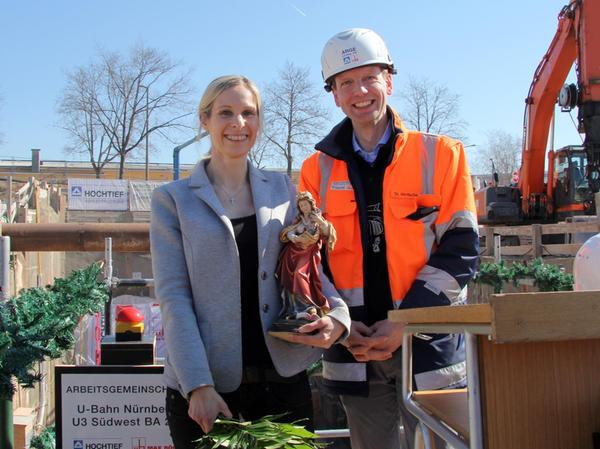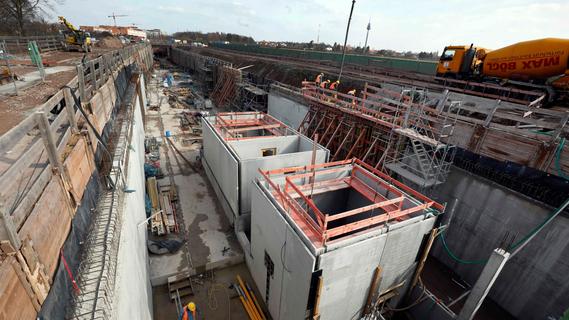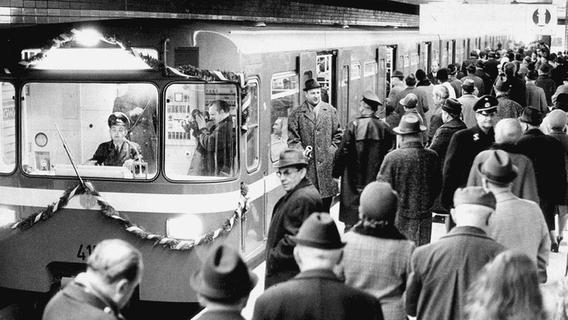– The tunnel builders have every reason to celebrate: With the breakthrough of the tunnel in Gebersdorf, a decisive step has been taken in the expansion of the U3 subway line. But now the real work begins.
Everyone involved has been working toward this moment for 19 months. Under the eyes of numerous observers, tunnel sponsor Anke König presses the red button. A signal sounds and a large yellow tunnel excavator starts moving on the construction site. Before long, he’s barely recognizable in all the dust he creates. It takes about ten minutes for his tiller to work its way through the last block of rock. With the symbolic act on the construction site, the tunneling work for the future subway line to Gebersdorf is officially over.
Construction consultant Daniel Ulrich explains the dimensions of the work in the southwest of Nuremberg with a look at the numerous heaps of earth and rubble. Around 38,600 cubic meters of stone weighing around 100,000 tons had to be excavated and removed. One of the special features: The route runs under the Ringbahn and under the Main-Danube Canal at Tiefen Feld. The number of complaints from residents was limited, probably also because the necessary truck trips were limited to times from 7 a.m. to 8 p.m.





